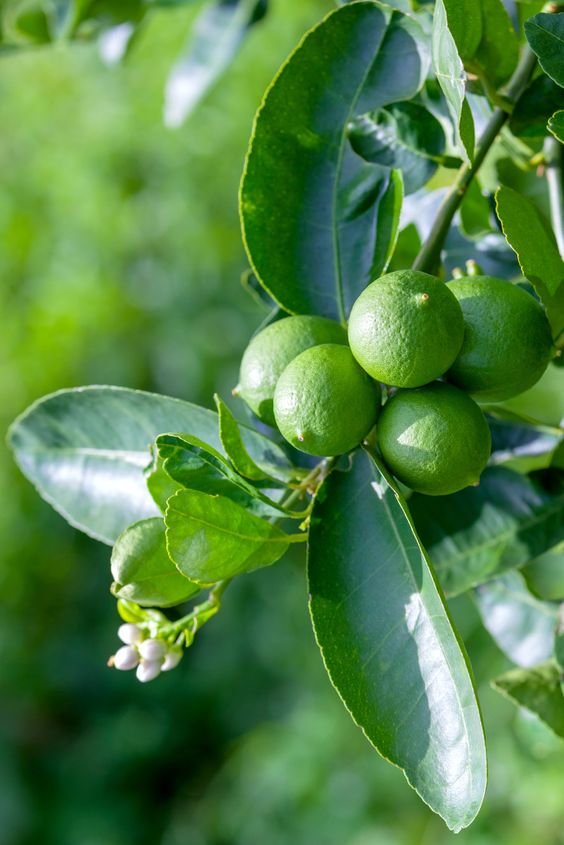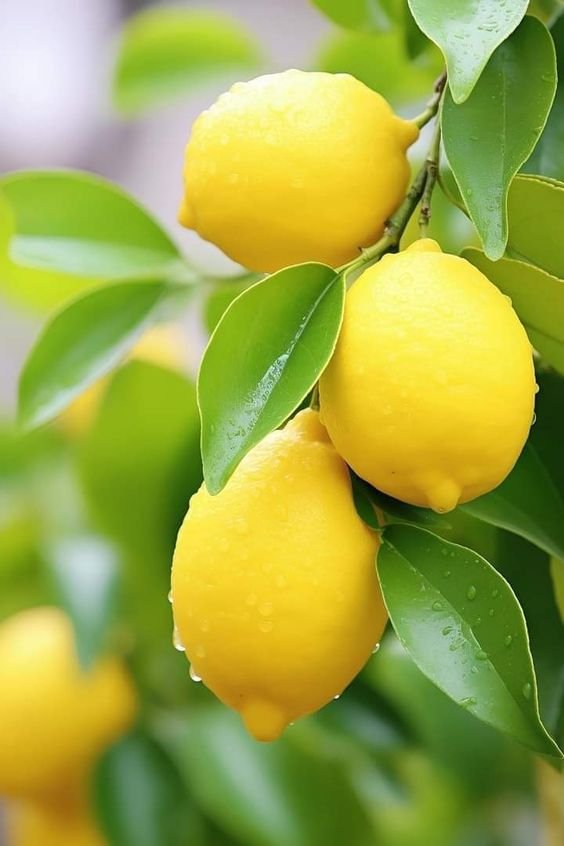If you’re a lemon enthusiast with a green thumb, the idea of nurturing your very own Lemon tree is undoubtedly enticing. The good news is that you don’t need an expansive garden to embark on this citrus adventure. Lemon trees can thrive both indoors and outdoors, making them a versatile addition to any living space.
Before you dive into the world of lemon tree cultivation, it’s imperative to grasp the intricacies of their life cycle. Unlike many other fruit-bearing trees, lemon trees exhibit rapid growth, often bearing fruit in as little as two years. In this comprehensive guide, we will explore the seven stages of lemon tree growth, each marked by its distinct characteristics. This knowledge will empower you to provide the best care possible, ensuring the optimal growth and fruit production of your lemon tree.

Here’s a short information chart for the Lemon Tree:
| Aspect | Details |
|---|---|
| Botanical Name | Citrus × limon |
| Common Names | Lemon, Limon |
| Plant Type | Broadleaf Evergreen Tree |
| Zones | USDA 8-11 |
| Exposure | Full sun, at least 6-8 hours of direct sunlight daily |
| Bloom Time | Typically in the fall and early spring |
| Height/Spread | Average 10’-20’ tall and 15’-20’ wide. Dwarf varieties under 10’ tall |
Quick Overview of Lemon Tree Growth Stages

Lemon trees progress through five distinct growth stages, each playing a pivotal role in their healthy development and fruitful yield. Here’s a brief overview of these stages:
1. Seed Germination

Lemon tree seeds are characterized by their small size, smooth texture, and milky white hue. Under optimal conditions, these seeds can germinate into a new plant in as little as five to seven days. During this stage, keen observers will witness the emergence of roots and tiny leaves as the lemon plant begins to take shape.
The journey begins with the germination of the lemon tree seed. This stage sees the emergence of roots and tiny leaves as the lemon plant takes its first steps towards life.
2. Seedling Stage

Once your lemon seed has successfully germinated, you’ll notice small green leaves emerging from the soil. These sprouts continue to grow, producing new leaves and eventually developing into established stems and leaves. It’s vital to remember that during this early stage, your plant is delicate and requires ample water, particularly in the heat of summer. After three months, you can transplant the seedling to a full-sun location in your garden
Following successful germination, the seedling stage commences. Small green leaves emerge from the soil, gradually growing into established stems and leaves. This stage demands extra care, especially during the hot summer months.
3. Youth & Maturity

As the young seedling grows, it gradually evolves into a sapling. During this phase, it’s essential to protect it from cold temperatures. Over time, the sapling will develop denser leaves, sturdier trunks, and branches adorned with thorns. Despite its newfound maturity, your lemon tree still demands vigilant care to ensure its health. Ensure it receives ample sunlight, the right nutrients, and proper hydration. However, take care not to overwater it, as excessive moisture can lead to root rot. Mature lemon trees are more resilient to colder weather, although they are not entirely frost-hardy.
As the seedling matures, it transforms into a sapling with denser leaves, robust trunks, and thorn-covered branches. Adequate sunlight, nutrients, and water are essential during this phase.
4. Flowering & Fruiting

At approximately two years of growth, your lemon tree should start forming buds during the winter months. As temperatures rise in early spring, enchanting flowers will emerge from these buds, giving birth to exquisite white blooms. The beauty of lemon trees lies in their self-pollination, eliminating the need for external pollinators. As the flowers fade, they make way for young lemon fruits that eventually ripen into delicious treats. Adequate watering is essential during this phase to ensure a bountiful harvest. If you’re cultivating a container lemon tree, ensure proper drainage to prevent root rot.
Around two years into its growth, your lemon tree will begin forming buds during the winter. With the arrival of spring, beautiful growth emerge, self-pollinating to produce tiny white blooms. These blossoms eventually give way to young lemon fruits that ripen into juicy treats.
5. Ripening Lemons

Maturity comes to fruition in around four months, during which it’s crucial to maintain consistent hydration and regular fertilization for your citrus tree. Keep a watchful eye for potential pests, especially aphids, which can harm your tree and hinder fruit production. Pruning affected branches or leaves and applying pesticides as needed can help combat infestations. Mature lemons sport smooth, yellow skin and vary in size based on growing conditions and lemon tree variety. Meyer and Eureka lemon trees typically yield the tastiest fruit. Occasionally, you might encounter unusually large lemons with thick skin, possibly originating from a grapefruit variety or tree rootstock.
It takes approximately four months for lemons to mature. During this time, it’s crucial to keep your citrus tree well-hydrated and regularly fertilized while guarding against pests, particularly aphids.
6. Harvesting the Lemons

Patience is paramount when it comes to lemon harvesting. Only pluck fully ripened lemons with a rich, sunny yellow color. Premature harvesting disrupts their growth and development. Once ripe, confidently harvest them and savor the fruits of your labor.
Harvesting should only occur when lemons have fully ripened, displaying a rich, sunny yellow hue. Premature harvesting can hinder further growth and development.
7. Drying
Unpicked lemons will eventually become discolored and withered, detaching from the tree. This signifies the end of the fruit-bearing cycle. At this juncture, cultivators commonly save the seeds for the initiation of a new lemon tree.
Unpicked lemons may eventually discolor and wither, detaching from the tree. At this point, cultivators typically save the seeds to initiate the growth of a new lemon tree.
Difference Between Immature Lemons and Mature
Distinguishing between immature and mature lemons is essential for optimal harvest. Immature lemons are smaller, green in color, and possess a more tart taste than their mature counterparts. Mature lemons are larger, sweeter, juicier, and feature smoother skin. To relish the best flavor and texture, wait until your lemons have reached full ripeness before harvesting.
Unbelievable Trick: How to Grow Lemon Tree from Seed Using Egg Shells & Carton
For those seeking an unconventional approach to lemon tree cultivation, consider the intriguing method of utilizing egg shells and cartons. This innovative technique can provide an exciting twist to your lemon-growing journey.
FAQ About the Growth Stages of a Lemon Tree
Q. How Tall is the Average 1 to 2-Year-Old Lemon Tree?
Ans: A 1 to 2-year-old Eureka Lemon tree typically stands at a height of 1 to 2 feet. Eureka lemons are the variety commonly found in grocery stores.
Q. How Long Will it Take to Grow a Lemon Tree Fully?
Ans: Growing a lemon tree from seed requires patience, as it can take up to 7 years for the tree to bear fruit. Commercially sold lemon trees, often grafted onto rootstock, tend to bear fruit in approximately 2 to 3 years. The exact timeline can vary based on conditions, lemon tree variety, and the tree’s age at planting.
Q. How Many Times a Year do Lemon Trees Produce Fruit?
Ans: The fruit-bearing frequency depends on the lemon tree variety, but a Meyer lemon tree can produce fruit up to four times a year.
Q. What Environment is Best for Lemon Trees to Grow?
Ans: Lemon trees flourish in warm, sunny environments with ample water and well-draining soil. They thrive at temperatures between 70 and 85 degrees Fahrenheit (21-29 degrees Celsius) and cannot endure frost or extreme cold. For those residing in colder climates, growing lemon trees in containers that can be moved indoors during winter is a suitable solution.
In conclusion, cultivating a lemon tree can be a rewarding endeavor, offering both visual beauty and the satisfaction of enjoying homegrown citrus fruits. By understanding and meticulously tending to each of the seven growth stages, you can ensure the healthy development and fruitful yield of your lemon tree year-round. Happy lemon growing
Pingback: 24 Best Types of Yucca Plants & How to Care for Them -
Pingback: Blue Princess Holly: The Ultimate Guide - Gardener's School
Pingback: Black Diamond Watermelon: A Comprehensive Guide
Pingback: Stop buying avocado, Learn how to grow it at home
Pingback: How to Grow Calibrachoa (Superbells® and Million Bells®) -
Pingback: How to Create a Cut Flower Garden: A Guide to Growing Your Own Bouquet
Pingback: Caring for Calla Lilies in the Garden: A Comprehensive Guide
Pingback: Grow Your Own Lemon Tree: A Comprehensive Guide for Sweet Success!
Pingback: Electroculture Gardening: Boosting Plant Growth
Pingback: The Ultimate Guide to Chicken Manure Pellets: Benefits, Application and Best Practices
Pingback: Monstera Obliqua : A Guide to Caring for the Elusive Delight
Pingback: 17 Veggies to plant in Summer Gardens - Gardener's School